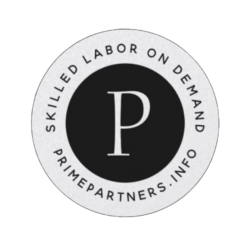Industrial Controls Engineer Interview Help
Overview of Required and Recommended Certifications, Educational Background, and Industry Qualifications
Educational Background
-
Bachelor’s Degree in Electrical Engineering, Mechanical Engineering, or a related field: A fundamental requirement for an Industrial Controls Engineer is a bachelor’s degree in a relevant engineering discipline. This education provides the theoretical foundation necessary for understanding complex control systems and automation technologies.
-
Master’s Degree (optional but beneficial): A master’s degree can be advantageous, especially for roles with a focus on advanced technology or leadership. It can also be a differentiator in competitive job markets.
Certifications
-
Certified Automation Professional (CAP): Offered by the International Society of Automation (ISA), this certification validates expertise in automation and control systems. It’s highly regarded in the industry.
-
Professional Engineer (PE) License: While not always required, having a PE license demonstrates a high level of competence and dedication to the profession. It may be particularly beneficial for roles that involve significant responsibility for safety and compliance.
-
PLC Programming Certification: Certifications in programming specific PLCs (Programmable Logic Controllers) from manufacturers like Siemens, Allen-Bradley, or Schneider Electric can be very beneficial, as PLCs are at the core of most industrial control systems.
Industry Qualifications
-
Experience with SCADA Systems: Supervisory Control and Data Acquisition (SCADA) systems are integral to industrial controls. Experience and proficiency with these systems are crucial for most positions.
-
Knowledge of Industry Standards: Familiarity with industry standards such as ISA, IEEE, and IEC can enhance a candidate’s profile. Understanding these standards is critical for ensuring compliance and best practices in designing and implementing control systems.
-
Familiarity with Industrial Protocols: Knowledge of protocols such as Modbus, Profibus, and Ethernet/IP is key, as these are commonly used for communication in industrial environments.
Interview Questions and Answers
Technical Questions
What is a PLC, and how does it work in an industrial setting?
- Answer: A PLC, or Programmable Logic Controller, is a digital computer designed for industrial automation to control manufacturing processes, such as assembly lines or robotic devices. It continuously monitors the state of input devices and makes decisions based on a custom program to control the state of output devices.
- Example: In a bottling plant, a PLC could control the conveyor belt speed, ensure bottles are filled to the correct level, and cap the bottles as they pass down the line. The PLC reads sensor inputs (e.g., bottle presence, fill level) and controls actuators (e.g., motors, valves) based on the logic programmed by engineers.
- Technical Details: PLCs offer rugged hardware and real-time computing capabilities, making them suitable for harsh industrial environments. They often include a range of I/O modules to interface with various sensors and actuators.
- Common Pitfalls: A common mistake is not considering the scalability of the PLC system for future expansion. Always design with potential growth in mind.
- Follow-Up Points: Discuss how PLCs can integrate with SCADA systems for enhanced monitoring and control.
Can you explain the difference between open-loop and closed-loop control systems?
- Answer: An open-loop control system acts based on input conditions without feedback. In contrast, a closed-loop system uses feedback from the output to adjust the control actions.
- Example: A simple open-loop system is an irrigation sprinkler that turns on based on a timer. A closed-loop system would adjust watering based on soil moisture levels.
- Technical Details: Closed-loop systems are more robust and adaptable to changes and disturbances, but they are also more complex and costly to implement.
- Alternative Considerations: In some scenarios, an open-loop system might be more cost-effective and sufficient if the environmental conditions are stable and predictable.
- Follow-Up Points: Discuss the implications of using each system in terms of reliability, cost, and complexity.
Behavioral Questions
Describe a time when you had to work under pressure to meet a tight deadline. How did you handle it?
- Answer: Working under pressure is common in engineering roles. I recall a project where we had to upgrade a plant’s control system over a holiday shutdown period. The timeline was tight, and any delay could have caused substantial financial loss.
- Example: My approach was to meticulously plan every step of the upgrade, ensure all necessary resources were available, and conduct multiple dry runs before the shutdown. I communicated regularly with the team and stakeholders to manage expectations and address any issues proactively.
- Outcome: The project was completed successfully within the deadline, and we managed to bring the plant back online without any disruptions.
- Best Practices: Prioritize tasks, communicate effectively, and maintain a calm demeanor to inspire confidence and focus among team members.
- Follow-Up Points: How do you ensure quality is not compromised under tight deadlines?
Situational Questions
If a critical piece of equipment fails, causing a system shutdown, what steps would you take to resolve the issue?
- Answer: The first step is to assess the situation by collecting data and understanding the scope and impact of the failure.
- Example: In a previous role, a motor failure caused a production line halt. I began by consulting the system’s error logs and conducted a visual inspection to identify the root cause.
- Steps Taken:
- Isolate the failed equipment to prevent further damage.
- Utilize diagnostic tools to identify the fault.
- Implement a temporary fix if possible to resume operations.
- Plan and execute a permanent repair or replacement.
- Document the incident and suggest preventive measures.
- Outcome: The issue was resolved with minimal downtime, and we implemented a predictive maintenance schedule to prevent similar failures.
- Common Pitfalls: Avoid rushing to conclusions without sufficient information, which can lead to incorrect diagnoses.
- Follow-Up Points: Discuss how you prioritize and manage tasks during a system failure.
Problem-Solving Questions
How would you approach designing a control system for a new manufacturing process?
- Answer: Designing a control system requires a comprehensive understanding of the process requirements and constraints.
- Example: For a new assembly line, the first step is to collaborate with process engineers to define the control objectives and identify critical parameters.
- Steps Taken:
- Conduct a detailed requirements analysis.
- Develop a conceptual design and select appropriate control strategies (e.g., PID, model predictive control).
- Choose suitable hardware and software platforms.
- Simulate the control system to test its performance under various scenarios.
- Iterate on the design based on simulation results and feedback.
- Implement and validate the control system in stages to minimize risk.
- Technical Details: Consider redundancy and fail-safes for critical components to enhance system reliability.
- Common Pitfalls: Overlooking the importance of thorough testing and validation can lead to design flaws being discovered post-implementation.
- Follow-Up Points: How do you ensure the system design is scalable for future process changes or expansions?
Conclusion
Preparing for an Industrial Controls Engineer interview involves understanding both the technical and soft skills required for the role. Candidates should be ready to discuss their technical knowledge, problem-solving abilities, and experience in handling real-world engineering challenges. Through comprehensive preparation, candidates can confidently demonstrate their qualifications and readiness to excel in the position.
More Controls Interview Guides
Explore more interview guides for Integrated Systems positions.
Building Automation Technician Interview Preparation
This Building Automation Technician Interview Preparation guide equips job seekers with essential knowledge and skill...
PLC Programmer Interview Preparation
This guide prepares job seekers for PLC Programmer interviews by covering essential topics such as understanding PLC ...
Smart Building Integration Specialist Interview Questions and Answers
This guide provides job seekers with essential interview questions and answers for a Smart Building Integration Speci...
HVAC Controls Technician Interview Guide
The HVAC Controls Technician Interview Guide equips job seekers with essential insights to excel in interviews for HV...
Industrial Controls Engineer Interview Help
This Industrial Controls Engineer Interview Help guide equips job seekers with essential strategies to excel in inter...
Recent Articles
Check out more articles from Best Electrician Jobs about getting hired inthe electrical industry.
Best Job Board for Electricians
Discover the best job board for electricians! Boost your career with insights on salaries, training, and growth!
Improve Your Electrician Job Postings for More Applicants
Discover how to improve your electrician job postings for more applicants! Boost your career with insights on salarie...
What is the Highest Paying Electrician Role?
Discover the highest paying electrician roles and how to prepare for them. Learn about the skills and certifications ...
Industrial Electrician Careers in California
From manufacturing plants to data centers, industrial electricians play a vital role in California's economy. Discove...
Security Technician Interview Questions and Answers
Security technicians are essential in protecting our modern world. Learn what to expect in your Security Technician i...
Featured Jobs
-

- Company
- Prime Partners
- Title and Location
- Cable Technician
- Wyoming, MI
- Employment Type
- FULL_TIME
- Salary
- $25.16-$32.59/HOUR
- Team and Date
- Commercial
- Posted: 04/17/2025
-

- Company
- Prime Partners
- Title and Location
- Apprentice Electrician
- San Diego, CA
- Employment Type
- FULL_TIME
- Salary
- $24-$37/HOUR
- Team and Date
- Commercial
- Posted: 04/17/2025
-

- Company
- Prime Partners
- Title and Location
- Security Alarm Installer
- Mesa, AZ
- Employment Type
- FULL_TIME
- Salary
- $25.81-$30.68/HOUR
- Team and Date
- Commercial
- Posted: 04/17/2025
-
- Company
- Jackson Healthcare
- Title and Location
- Journeyman Electrician
- Alpharetta, GA
- Employment Type
- FULL_TIME
- Salary
- $30.6-$35.86/HOUR
- Team and Date
- Commercial
- Posted: 04/17/2025
-

- Company
- Prime Partners
- Title and Location
- Journeyman Electrician
- Gilbert, AZ
- Employment Type
- FULL_TIME
- Salary
- $40-$55/HOUR
- Team and Date
- Data Center
- Posted: 04/17/2025
-

- Company
- Prime Partners
- Title and Location
- Voice & Data Technician
- Glendale, AZ
- Employment Type
- FULL_TIME
- Salary
- $23-$35/HOUR
- Team and Date
- Commercial
- Posted: 04/17/2025
Best Electrician Jobs
Ready to get started?
Stop worring about manpower. And get back to what you do best.
Best Electrician Jobs is for Everyone
At Best Electrician Jobs, we are dedicated to fostering an inclusive environment that values diverse perspectives, ideas, and backgrounds. We strive to ensure equal employment opportunities for all applicants and employees. Our commitment is to prevent discrimination based on any protected characteristic, including race, color, ancestry, national origin, religion, creed, age, disability (mental and physical), sex, gender, sexual orientation, gender identity, gender expression, medical condition, genetic information, family care or medical leave status, marital status, domestic partner status, and military and veteran status.
We uphold all characteristics protected by US federal, state, or local laws, as well as the laws of the country or jurisdiction where you work.
 Best Electrician Jobs
Best Electrician Jobs